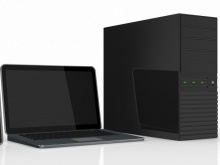'ZDNET Recommends': What exactly does it mean?
ZDNET's recommendations are based on many hours of testing, research, and comparison shopping. We gather data from the best available sources, including vendor and retailer listings as well as other relevant and independent reviews sites. And we pore over customer reviews to find out what matters to real people who already own and use the products and services we’re assessing.
When you click through from our site to a retailer and buy a product or service, we may earn affiliate commissions. This helps support our work, but does not affect what we cover or how, and it does not affect the price you pay. Neither ZDNET nor the author are compensated for these independent reviews. Indeed, we follow strict guidelines that ensure our editorial content is never influenced by advertisers.
ZDNET's editorial team writes on behalf of you, our reader. Our goal is to deliver the most accurate information and the most knowledgeable advice possible in order to help you make smarter buying decisions on tech gear and a wide array of products and services. Our editors thoroughly review and fact-check every article to ensure that our content meets the highest standards. If we have made an error or published misleading information, we will correct or clarify the article. If you see inaccuracies in our content, please report the mistake via this form.
Optima WorkPro X860


Optima WorkPro X860
pros and cons
Intel vPro promises to ease desktop management for IT managers but does it really stack up? We review Optima's first vPro machine to find out.
Intel's solution to this management problem is the vPro hardware management chipset. vPro is a hardware remote management chipset which is accessible regardless of whether the PC is turned on or not. It is closely tied into the network card of the computer which allows you to access its features remotely. This functionality has been in the server arena for some time now with management products such as Integrated Lights Out Management (ILOM) giving you full video, keyboard and mouse console redirection as well power control of your servers over Ethernet.
vPro does provide some of the functionality that ILOM has, but Intel have taken a different approach to remote management. The major differences between vPro and server management is that vPro does not offer full keyboard, video and mouse redirection. Depending on the manufacturers' implementation, vPro can redirect a BIOS configuration screen to a remote console but that's as far as it will go for the moment. If you wish to control a graphical interface -- such as Windows -- remotely, it has to be done through software agents.
This does not mean that vPro is a poor product in comparison, it is just different. Where vPro shines is asset management and working in conjunction with management tools such as Microsoft's Systems Management Software to roll out updates and monitor hardware.
vPro's security comes in two flavours: enterprise and small business. Both are included in every implementation of vPro and can be chosen in the vPro configuration interface. Enterprise requires all communications to be authenticated via security certificates where as small business simply uses a user name and password in order to take control of a computer.
If you have followed Intel's marketing push on vPro, you may have heard a mention of other features such as antivirus and network security ... unfortunately these features have not been officially released yet. We spoke to Intel about how these features will work and they explained how they have taken an interesting approach to the security layer by implementing it in a virtual machine which runs alongside your main operating system but essentially has full control of the network card. This virtual machine is powered by the main processor and if it detects incoming or outgoing viruses, it can disconnect the operating system from the network while still allowing management to function and communicate with the administrator's console. All vPro machines will be capable of implementing this feature through software upgrades and we are very keen to see this in action first hand when it is released.
Top ZDNET Reviews
How we tested
We tested the vPro features using Microsoft Systems Management Server (SMS) SP1 with the Intel AMT plug-in for vPro management running on an Acer Aspire 3620 Laptop. We payed special attention to the features vPro brings to the WorkPro X860, gauging how much added value it offers in the area of remote management.
What's inside
Optima supplied us with their vPro enabled Optima WorkPro X860, powered by an Intel Core 2 Duo with two processors running at 2.1GHz, 1GB of RAM and a 320GB hard disk. It also has an Nvidia GeForce 6600 graphics card with 256MB of RAM. This is a fairly high spec machine for everyday office work and would be more suited to graphic design work with the dual processor configuration, plenty of RAM and hard disk space as well as the higher end graphics card. The Nvidia card comes with both DVI and VGA so dual monitors are supported.
The case is a conservatively designed in black and silver which looks somewhat similar to some HP models we have seen in the past. The components inside the case have been very tightly packed in and the hard disk is mounted on its side with a mounting plate which comes off with two thumb screws. This is not very efficient use of space but it does make changing hard disks a much quicker process.
On the motherboard there are only two free PCI slots. This isn't too much of an issue as most of the connectivity options you should need are already in place -- eight USB ports, sound, dual video, network and something Optima always seem to include on their PCs that most others don't -- FireWire.
In usability terms, vPro does not change the end user experience -- all the benefits are for administrators. There are two ways to use vPro, the first is through the Web interface and the second is through management software such as Microsoft's Systems Management Server (SMS). Intel has released a plug-in which complements SMS's management features, giving you access to power control and redirection features if they are available on the client.
| [Click to enlarge] Viewing system errors in the vPro console. |
Through the Web interface you can review all the installed components, control power and review a log of error messages relating to any hardware (See screenshot). If you decide to use management software, in the case of SMS, you can power the machine up and down, reboot and access more advanced features such as powering up in the middle of the night for software updates and then powering off again when done.
Configuration of the vPro system is done via the BIOS where there is a dedicated sub-menu for remote management. In the case of the WorkPro X860's implementation of vPro, it appears that SMS may not be fully compatible and we did not have any options to perform remote redirection to adjust BIOS settings. Optima assure us however that it is fully compatible with LANDesk and are looking into the SMS issue.
Normally, disk redirection is an option so we can reboot the computer to use a disk image on a server as a boot disk and this feature appears to have been omitted. Only booting from the main disk and via a standard PXE boot is available.
We aren't concerned with the incompatibilities with BIOS re-direction. This would be a seldom used feature but we feel that disk redirection is more important as it allows an administrator to remotely boot the computer into diagnostic mode or to re-image the main disk to bring a PC back to a working state. vPro is an upgradeable feature that Optima may add additional features to through firmware upgrades in the future.
Verdict
Optima has done a good job with the WorkPro X860's specs. For AU$1,599 you get a lot for your money: Dual processors, 1GB of RAM and a huge 320GB hard disk. In addition to this, it also carries an impressive three year warranty.
No doubt vPro is a welcome addition in the eyes of administrators. Our only concern is the emerging opportunity for incompatibilities between management software and vPro. Hopefully this will not be a common occurrence.
Overall, this is an good product, priced well and backed by an excellent warranty.
| Product | Optima Workpro X860 |
|---|---|
| Price | AU$1,599 |
| Vendor | Optima |
| Contact | (02) 9701 3777 |
| Interoperability | |
|---|---|
| Good number of USB ports with the addition of Firewire. Also includes both DVI, VGA and networking. | |
| Futureproofing | |
| Very fast processor with plenty of RAM. This is a high end workstation which should last longer than the ordinary office PC. | |
| ROI | |
| Priced very well for the specification. Processor, RAM and hard disk should be sufficient for a number of years for the average office user and also doubles as a good graphics workstation. | |
| Service | |
| Three year onsite warranty, phone support is available. Knowledgebase, documentation and software downloads are all available online. | |
| Rating |